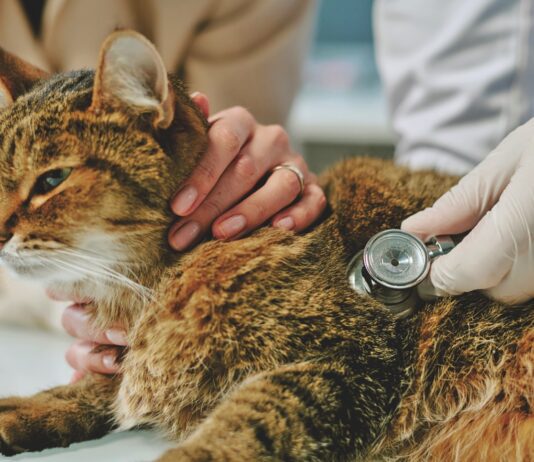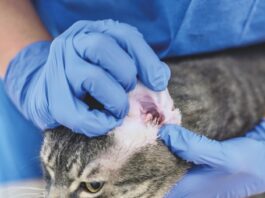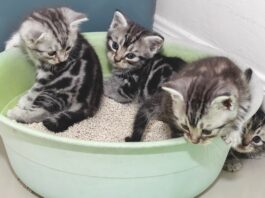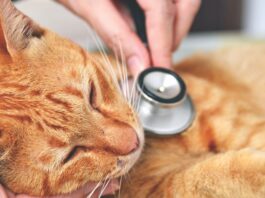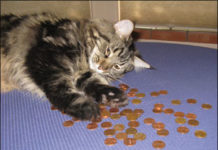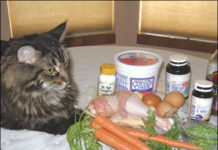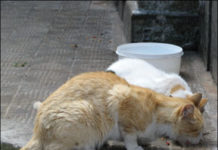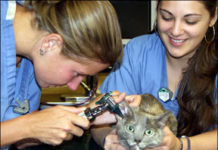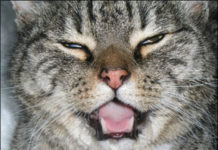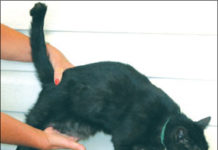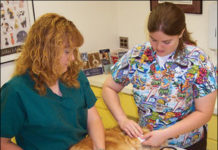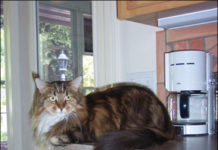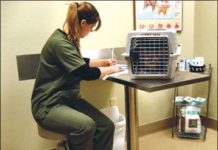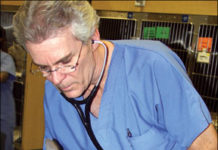Ask Elizabeth: 07/08
My kitten, Snapper, recently spent a week in intensive care. Hes fine now, but he was so very sick that we feared he wouldnt make it. The cause of all his troubles turned out to be a penny. Yes, a penny! Apparently he had eaten one. As we later learned, pennies minted after 1982 are made from zinc, with just a coating of copper. If an animal swallows one, stomach acids eat away the copper…
The Responsible Breeder
If you think its just a matter of introducing two cats, letting nature take its course and then playing with their cute kittens, cat breeding isnt for you. So says Alice Ferris, a 15-year veteran breeder of Persian and Himalayan cats and owner of Lilac Farms Custom Cattery in Hartford, Connecticut. "Being a responsible breeder has many facets," says Ferris. "It takes a lot of dedication, research, time and money to raise healthy kittens. A breeder must desire to learn the medical side of felines, because 80 percent of breeding cats involves feline health care."
Homemade Diets: Use Care
You likely consider your beloved cat to be a truly unique creature, and in many respects she may indeed be one of a kind. When it comes to her dietary requirements, however, shes just like any other cat in the neighborhood - or in the world, for that matter. That is, all cats need a nutritionally sound and palatable daily diet, without which they couldnt possibly exist for very long, let alone develop their distinctively individual personalities. The lack of nutritionally complete and balanced food intake can result in a wide variety of disorders that can have lethal consequences if ignored. Daily consumption of a nutritionally adequate diet will not, of course, protect a cat from injury or from the onset of many systemic illnesses. But it is likely to supply the resources that an injured or sick animal needs in order to respond well to medical or surgical treatment.
Danger in the Garden
Nothing gives you more pleasure on a warm and sunny afternoon than to sit peacefully beside your garden and thrill at the sight of the blossoming lilies, chrysanthemums and foxglove. You especially like the graceful yew shrubs bordering this little patch of earth - a touch you added only recently. And the philodendron thats finally coming into its own, way back there near the fence, is beautiful beyond words. Your cat sits quietly in your lap, apparently enjoying the view as much as you are. But heaven forbid that she would decide to investigate the garden at close range and show her horticultural appreciation by nibbling at one of the plants. Tulips, lilies, foxglove, yew shrubs and philodendron are among hundreds of plants that are known to be poisonous to cats. Ingesting just a small leaf of some common ornamental plants could make your little companion quite ill. And without appropriate first aid and prompt veterinary treatment, swallowing a sizable amount could be fatal to her.
Short Takes: 06/08
Despite protests by the Cat Fanciers Association (and the American Kennel Club), Los Angeles has enacted one of the strictest pet-sterilization laws in the country. Unless youre a registered breeder, failure to spay or neuter a cat after four months of age in L.A. can bring a $500 fine or 40 hours of community service. Advocates of the tough new law say they had no choice. Los Angeles animal shelters had to euthanize 8,960 unwanted cats last year.
Diagnosis: Otitis Externa
Among all acquired feline ear disorders, the most common by far is otitis externa, an infection of the outer ear canal that, if untreated, can progress to the inner ear, damage the ear drum and seriously compromise an animals hearing as well as its sense of balance. The most common cause of this unpleasant condition and its potentially deafening consequences is an assault on the ear by an outside invader, the ear mite. In some cases, however, the culprit is an organism that normally resides harmlessly within a cats ear - a one-celled fungus, or yeast, known as Malessezia.
When Your Cat Pants
Your cat bounds up the stairs as usual. But when she gets to the top, she sits and pants - certainly not the usual. Should you worry, wait and see if she does it again or call your veterinarian immediately? In general, cats dont pant as dogs do. Dogs pant to cool themselves off, and its normal. While some cats pant from stress, pain or excitement, panting isnt usually normal for a cat, and you should probably consider taking action if it happens. What exactly is panting? Panting differs from regular breathing. Normal inhalation is an easy movement of the chest outward, with exhalation pulling the chest gently inward. Exhalation usually lasts three times longer than inhalation. The result is that entering air goes deep inside the lungs, where there is an exchange of oxygen and carbon dioxide via the blood vessels.
The Gluttonous Cat
You merely open your eyes in the morning - and your cat sprints to the kitchen. You head for the refrigerator and trip over the cat, who is winding around your legs, begging for food. Is the food gone as soon as it hits the bowl? Worse yet, does your cat wake you up in the middle of the night to be fed? Theres always a reason for excessive hunger in cats. Sometimes it signals underlying illness; sometimes its a matter of conditioning or boredom. Heres what you need to know about your ravenous cat. It seems obvious to say that a cat that is overweight is eating too much. "But it all depends on the cat," says Kathryn E. Michel, DVM, an associate professor of nutrition at the University of Pennsylvania. "Some cats can choice-feed. If you leave out food, theyll eat what they want and maintain a good weight. Other cats will eat everything you put out for them and then look for more."
Cats and High Blood Pressure
As cats reach the age of eight or nine (the rough equivalent of 40 or 50 in a human), they may begin to show signs of age-related physical disorders that may or may not increase in severity as the animals continue their transition into old age. Some feline geriatric conditions, of course, may ultimately prove fatal. Others, however, may be amenable to medical therapy that can extend the life of an elderly cat for several years. Hypertension (abnormally high blood pressure) is one of the latter disorders. If untreated, it can lead to blindness and possible damage to the heart, kidneys and brain. But given an accurate assessment of its cause and prompt initiation of appropriate veterinary treatment, the condition is most often manageable, says Richard Goldstein, DVM, an associate professor of small animal medicine at Cornell Universitys College of Veterinary Medicine who is board-certified by both the American and European Colleges of Veterinary Internal Medicine. Feline hypertension, he notes, "occurs far more frequently than people think."
Short Takes: 04/08
Its one of the toughest choices a pet owner can face - between life-saving treatment and quality of life for the pet. During chemotherapy for lymphoma, the third most common form of cancer in cats, for example, the patient might lose hair, appetite, weight, sleep or even its whiskers. Some help in deciding, if the difficult time ever comes, can be found in a Journal of Feline Medicine and Surgery (Vol. 10, Issue 1) report: "Owners perception of their cats quality of life during chemotherapy for lymphoma." Of the 31 cat owners queried for the study, 25 (81 percent) said they were happy that they had treated their cat with chemotherapy, whereas three felt regretful and three were unsure of their feelings. Most of the owners (19) reported that their cats had "more good days than bad" during chemo; seven reported more bad days than good (including one cat that was miserable every day of the treatment); and four cats had "all good days." Despite the treatment, some cats did die of lymphoma or related causes. Obviously those owners were not happy with their pets eventual fate, but few regretted trying their best to save a life.
Testing for FIV and FeLV
Among all causes of lethal feline disease, none should be taken more seriously by cat owners than those caused by two specific submicroscopic organisms: feline leukemia virus (FeLV) and feline immunodeficiency virus (FIV). Although these viruses are somewhat different in appearance and in the manner in which they exact their toll on feline health, infection with either one of them, if undetected, is capable of causing a cats premature death. To make matters worse, FeLV and FIV infections are by no means rare. Recent estimates indicate that two percent to four percent of the 83 million or so cats in the U.S. harbor one or both of these two viruses.
Pyometra: A Deadly Threat
Humane considerations overwhelmingly support the practice of spaying — the surgical removal of a female cat’s ovaries and uterus — when an animal is about six months of age. Perhaps the most compelling argument in favor of this procedure (also known as ovariohysterectomy) is the reduction of feline overpopulation. One study has found that 85 percent of cats that are dropped off at shelters are eventually destroyed. It is estimated that as many as three to four million unwanted cats and kittens are put to sleep annually in the U.S.

